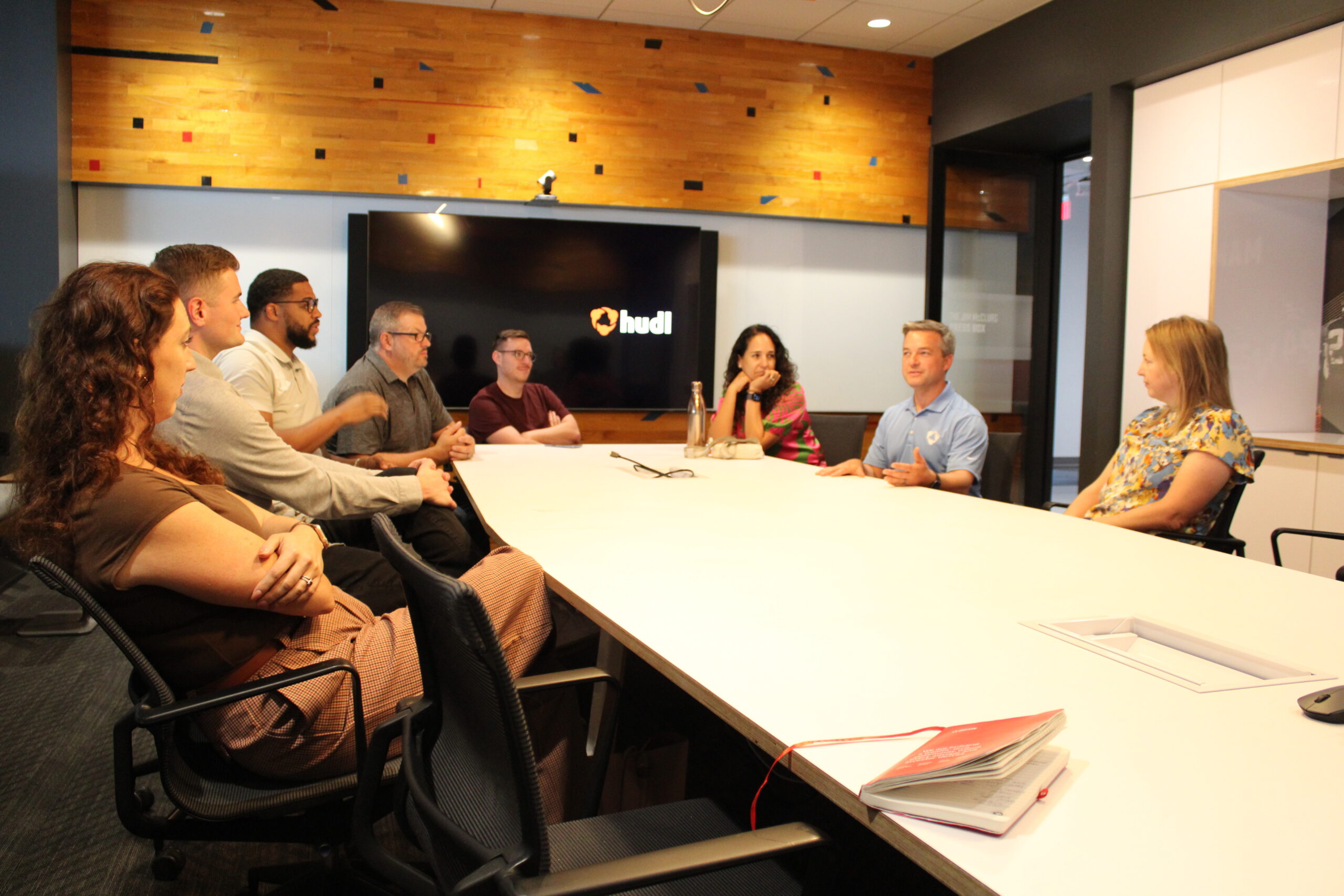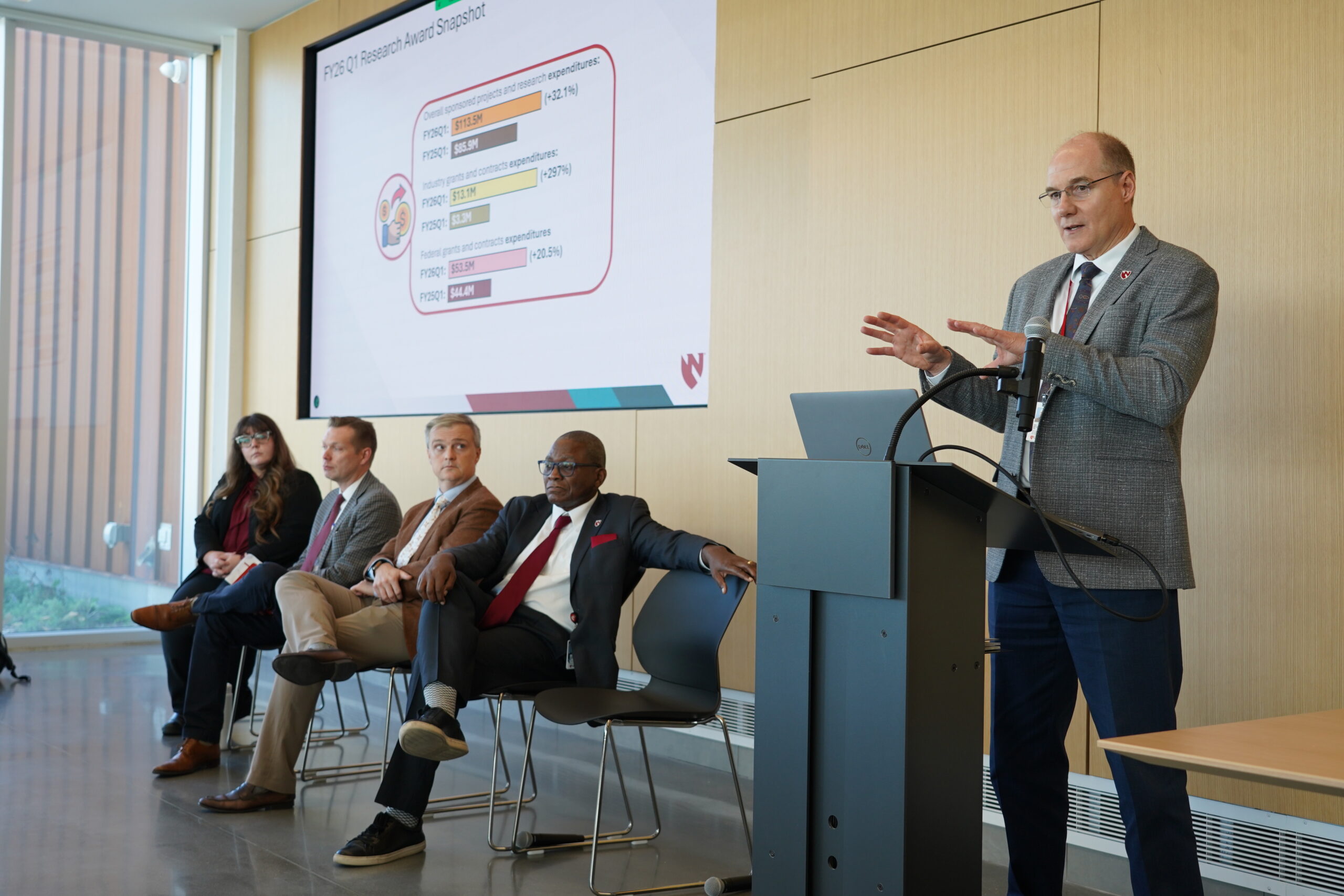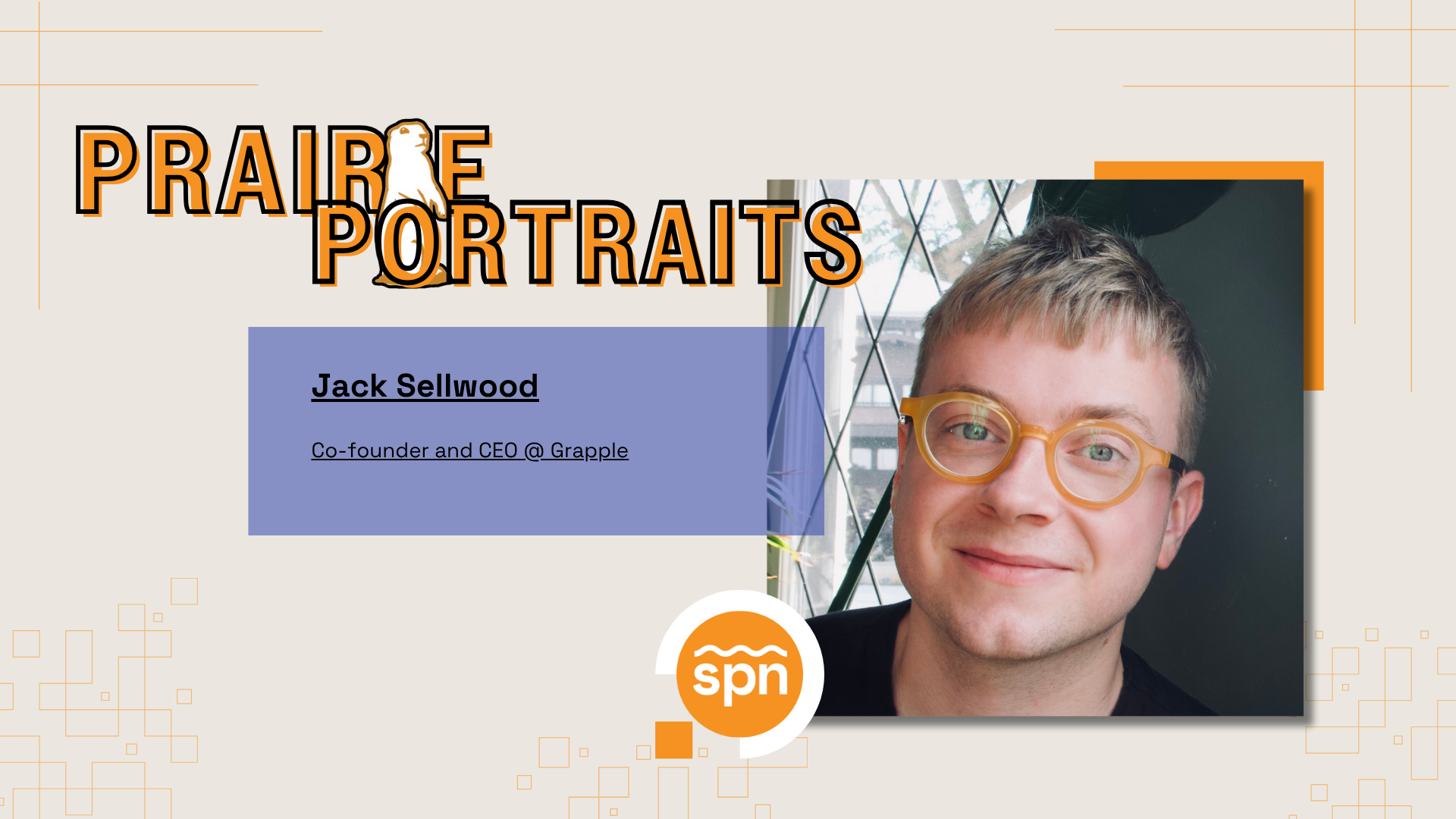Raikes School director Dr. David Keck (standing) and the school’s faculty and advisors emphasize “making points of connection in all the coursework,” Keck says. Photo from raikes.unl.edu.
 Educating people to enter the technology field is tough, given its notorious fast pace and constant changes. At the University of Nebraska-Lincoln‘s Jeffrey S. Raikes School of Computer Science and Management, faculty, alumni and industry advisors and volunteers use a constantly evolving approach to make sure graduates are ready.
Educating people to enter the technology field is tough, given its notorious fast pace and constant changes. At the University of Nebraska-Lincoln‘s Jeffrey S. Raikes School of Computer Science and Management, faculty, alumni and industry advisors and volunteers use a constantly evolving approach to make sure graduates are ready.
By all accounts, it’s working. Nebraska Global managing principal Steve Kiene recently praised the Raikes School in a speech at TEDxLincoln. Rather than earning a degree in a finite area or subject, he said, the school teaches students to innovate and think about a lot of different variables. “The Raikes School, they spread people,” he said.
‘Points of connection’
Founded in 1999 as the J.D. Edwards Honors Program in Computer Science and Management, the Raikes School is a joint venture between UNL’s College of Business Administration and Department of Computer Science and Engineering. Each of its 116 undergraduate students (about 30 per class) receives at least a minor in each field; most major in one or the other.
“We spend a lot of time making points of connection in all the coursework,” said Dr. David Keck, the director of the Raikes School. For example, he compares finance analysis and signal processing in his junior-level finance course.
Software development projects also allow for a lot of overlap. The sophomore curriculum traditionally involves a problem posed by Omaha-based Union Pacific and involving both computer science and business aspects. (Left: The Kauffman Center, a living/learning facility specifically for Raikes School Students, opened in 2001. Photo by cat1205123 via Flickr.)
The Design Studio: ‘A challenge’
Juniors and seniors (as well as Raikes School MBA students and a few other computer science and advertising students) earn three credit hours per semester exercising both skill sets in the school’s Design Studio. There, they work with real “clients,” who define products that they want to actually use in their businesses. This year’s 11 projects include mobile and web applications and cloud computing for the likes of Cerner, Proxibid and Speedway Motors.
“When the students feel like real people with real data are specifying this, they’re twice as motivated,” Keck said. “You can teach more because the students want to do it and engage.” But, he said, “The way we do it is harder to do. We need more industry support, more people to volunteer their time.” And, he has to constantly balance between academia’s rigorous expectations and industry’s desire for employees with practical skills.
The Design Studio course meets for 75 minutes every Tuesday and Thursday, but students are expected to devote at least 10 additional hours each week. Every other week, that includes a client meeting in which students present iterations of their projects and receive feedback to guide the “agile” development process.
“If we mess something up, it really does affect them. It’s not just our grade,” said Jessah Hofker (left, photo from linkedin.com), a junior marketing major and computer science minor from Eagle, Neb., who is working on an app for Microsoft Windows Phone 7. “It’s a challenge, but a welcome one.”
Coaches chip in
To help with that challenge, the Raikes School added a “coach” to each of the 11 Design Studio teams this year. Each coach is an executive or technology pro who volunteers at least one to two hours per week to meet with the team, answer questions and generally serve as a neutral source of knowledge and experience.
“I think it’s going to be a game-changer for us,” said Brian Zimmer (left, photo from twitter.com), one of two Design Studio instructors. Zimmer, who’s a two-time Raikes School alumnus, also works part-time for Nebraska Global.
John Wirtz and Brian Kaiser, two of three co-founders of Lincoln-based Hudl, are co-coaches this year for the team working with Lincoln-based banking software company FiServ. The project involves developing a mobile app that helps banks connect with their small business customers.
Wirtz and Kaiser, both Raikes School alumni, each devote at least an hour per week to meeting with the team, and they provide a third hour of Hudl resources, like meeting with the company’s user experience staff. They also connect their team with local small businesses and make themselves accessible by email and phone whenever possible.
“Those are the times when I think we’re most relevant, and we can make the most impact: when the students are in a jam,” said Wirtz, Hudl’s COO.
Wirtz said he sees his and Kasier’s role as not driving anything, but providing “bumpers” to keep students from getting too far off track. But, that’s not to say they remove every roadblock. “When these projects work well, it’s a good balance of being in over your head, figuring it out and getting back in over your head again,” Wirtz said.
Evolving goals
That sounds right in line with the Raikes School’s new “mission” to emphasize innovation and leadership. “Regardless of the context, leadership and innovation go hand in hand,” Keck said. “You need leadership when you’re swimming upstream, doing something new.”
The focus on leadership and innovation can be seen in the evolution of Raikes School graduates’ goals during Keck’s tenure as director. Ten years ago, students’ post-graduation goal was to land a job with an established technology company like Google, Microsoft or Amazon, Keck said. Now, about half of his students want to stay in Nebraska or the Midwest and start their own companies or work for local companies like Hudl.






